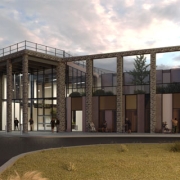Modular construction has been heralded for several years now as a construction methodology that saves time, reduces waste and minimises cost. It is therefore unsurprising that modular construction forms part of the various “modern methods of construction” that are now being encouraged by the UK Government. Use of modular construction can range from isolated elements like bathroom pods to where the majority of the building is comprised of modules and is commonly encountered in housing, student accommodation and hotels. However, it is not without its challenges as demonstrated by Legal and General’s announcement of the closure of their modular factory.
Legal or contractual issues tend to arise when modular construction is used for the majority of the construction of a building but the various contractual agreements have been drafted on the assumption that “traditional” construction methods are being used – trying to fit the square peg into the circular hole does not work without some forethought. and adjustment.
There is not enough space here to list all issues that one should consider when employing modular construction but we discuss a few key issues below:
1. Payment and Transfer of Title
Under a “traditional’ construction contract, a contractor will usually receive payment on a monthly or stage basis based on the value of works carried out during the previous month or stage. There has been a rise in advance payments over the last few years so that materials can be acquired at a known price but those are still likely to be a small percentage of the overall construction costs.
Whereas a modular contractor will likely incur large costs at project inception (accounting for material and fabrication costs) and therefore will seek for payment terms to be front-loaded.
This creates some issues and how those are managed will depend on the procurement method and the funding of the development. For example:
- Is the modular contractor the main contractor? Or are they a key sub-contractor?
- Is the modular contractor also responsible for installation?
- If there is a facility agreement in place, what conditions precedent will the funder require before any payment to a modular contractor can be made?
- The preference will be for the modules to be delivered to site before payment but how can the modular contractor incur all of their costs before payment?
- If payment is made before the modules are on site then the funder and employer will expect ownership of the modules to pass to the employer – but can the modular contractor agree to this? What happens if the employer becomes insolvent?
Off-site materials agreements are often used to allow for greater security of performance however these agreements may be of limited use in the context of modular construction, at least at the outset. If a modular contractor is looking for payment upfront to procure materials then, whilst title can be transferred in the materials, the materials will be fabricated into the module. Therefore the materials in which the Employer has ownership will change form and therefore at some point may be considered to no longer exist however ownership of the module can’t be vested in the Employer before it actually exists!
Although in these situations an advance payment bond may provide some comfort, there is a cost associated with these bonds and there is a limit to the value that can realistically be covered under these bonds before the costs become prohibitive.
2. Location of modules
Even if title in the modules (or parts thereof) is transferred effectively under UK law, if the modules are located elsewhere will this transfer of title be binding under the law of the jurisdiction where the modules are located? From a practical perspective, even if an employer obtains a legal opinion from an appropriately qualified foreign lawyer (which will come at a cost) to ensure that title has transferred properly, how easy will it be to get access to the modules and procure their delivery to site should the modular contractor become insolvent?
3. Insolvency
Insolvency is a concern in any construction project but practical issues are exacerbated in modular construction as modules are often specialised materials that are unique to each modular contractor. Other contractors may not have the facilities or hold the necessary intellectual property licence to reproduce these designs.
Insolvency is equally a concern for any modular contractor. The modules they are produce may only be appropriate for a particular building/development and therefore, in the face of employer insolvency, any modules produced may not be re-usable for other projects.
A potential solution may lie in the utilisation of escrow accounts to provide parties with further comfort.
4. Delivery
There are additional considerations around delivery that traditional construction contracts are not normally required to consider:
- Who is best placed to manage any delays at port if the modules are coming from outwith the UK?
- Has the contractor checked the access route to site and is there enough storage space pending unloading?
Parties can borrow terms from plant contracts (such as the incorporation of Incoterms) to provide certainty as to who is responsible for transit risk, payment of duties and insurance.
5. Inspection
Employers will want to inspect modules at certain stages in the factory before items are closed up. This is of increased importance as defects identified in delivered modules may have already been replicated in the construction of other modules yet to be delivered to site.
6. Interface
As noted previously, the procurement route may affect the contractual responsibility for dealing with physical interfaces but from a practical perspective it will be important that any platform on which the modules are being placed is at the correct gradient and can bear the required structural load.
7. Intellectual Property Obligations
The standard position in construction contracts is for the Contractor to provide an Employer with a non-exclusive, non-terminable, royalty-free licence to use and reproduce any design in the works. The most common restraint to such a licence is that the designs cannot be reproduced in any extension of the works.
However, in a modular construction contract, the contractor may seek to provide a more limited form of licence as their modular designs will be proprietary and are the product of significant investment. Which they want to avoid being shared with a rival modular contractor.
Conclusion
Modular construction offers many benefits but equally can lead to complications if not properly considered. It is therefore critical that construction parties do not assume that one size fits all. The traditional procurement model and standard form contracts such as SBCC and JCT are not fit for purpose in ensuring that the different risks are addressed appropriately and it is important to have considered these before the contracts are entered into so that all parties are clear as to the risks and responsibilities.
Source: Lexology











